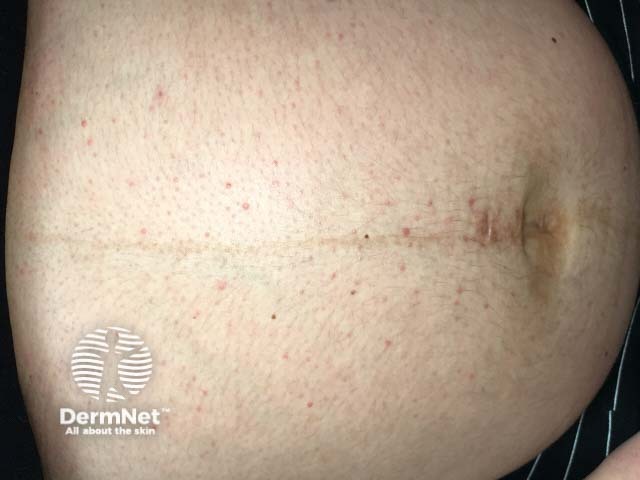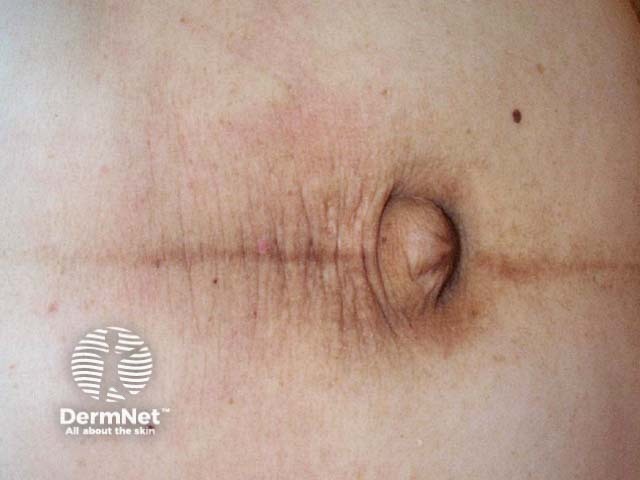Main menu
Common skin conditions

NEWS
Join DermNet PRO
Read more
Quick links
Pigmentary disorders Terminology
Author: Juhee Roh, Medical Student, University of Auckland, Auckland, New Zealand. DermNet Editor in Chief: Adjunct A/Prof Amanda Oakley, Dermatologist, Hamilton, New Zealand. Copy edited by Gus Mitchell. July 2018.
Introduction
Demographics
Causes
Clinical features
Diagnosis
Differential diagnoses
Treatment
Outcome
Linea nigra is a physiological form of hyperpigmentation commonly seen in the first trimester of pregnancy [1–3]. It is a dark vertical line that runs down the middle of the abdomen and it can be one of the earliest indicators of pregnancy [1,3]. It is also known as the ‘pregnancy line’.

Linea nigra

Linea nigra

Linea nigra
Linea nigra occurs in more than 90% of pregnant women, and is often in association with hyperpigmentation of nipples, areola, and genital areas [2,4–8].
Pregnancy-related hyperpigmentation is prominent and more common in women with darker complexions (Fitzpatrick skin types 4–6) compared to fair-skinned women (Fitzpatrick skin type 1 or 2) [2].
Linea nigra can also affect men and children.
A study involving 1550 Nigerian patients reported:
Linea nigra and other forms of pregnancy-related hyperpigmentation are due to placental hormones, metabolic factors and immunological factors [9].
It is no longer thought that α– and β–melanocyte-stimulating hormone from the pituitary gland causes hyperpigmentation during pregnancy [3].
Linea nigra is a linear band of macular hyperpigmentation that extends vertically down the midline of the abdomen [12,13].
Like other cutaneous physiological changes of pregnancy, linea nigra is diagnosed clinically [2]. No specific tests are necessary.
Other pigmented conditions that may occur on the abdomen include:
There is no specific medical treatment for linea nigra [13]. Women can be reassured that linea nigra has no adverse effect on pregnancy outcomes, and medical treatment is not required [18]. Affected women should avoid sun exposure to the abdomen, as this might cause the line to become darker.
It has been suggested that folic acid reduces the formation of linea nigra. Folic acid can be found in foods such as leafy green vegetables, oranges and whole wheat bread [2]. Bleaching has been used in some cases, with unsatisfactory results [12,18,19].
Linea nigra usually gradually fades over time after delivery, but some women may have persistent hyperpigmentation [1–3]. It can reappear with subsequent pregnancies [13].